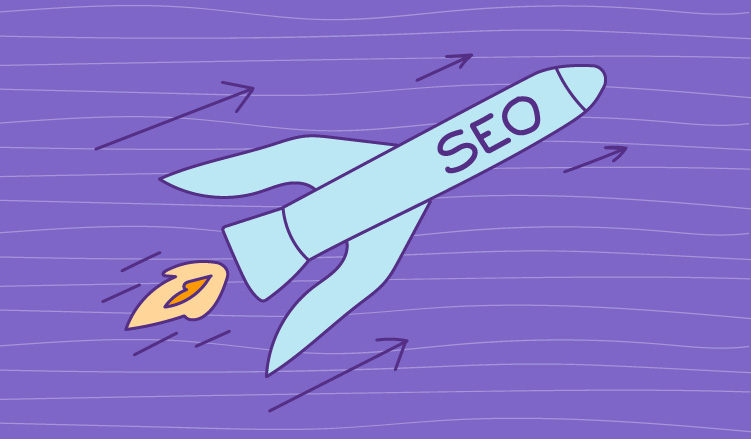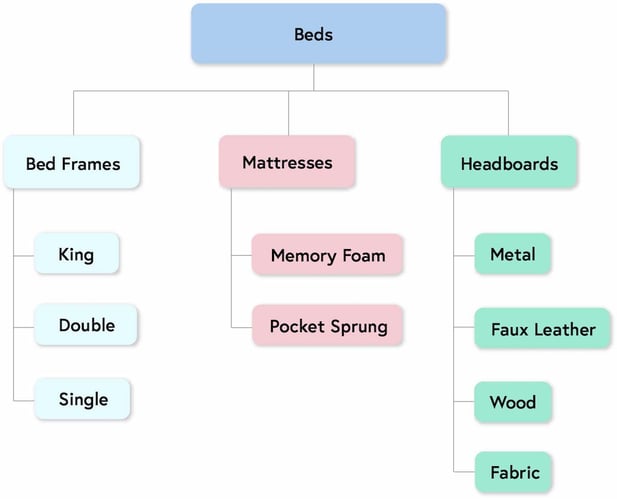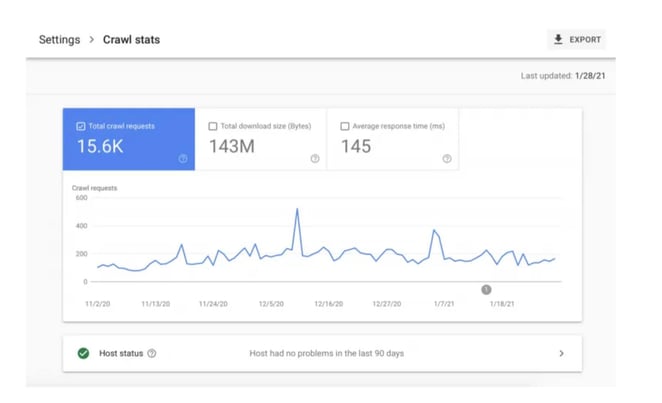
Keep the good stuff coming
Subscribe to our blog newsletter and get monthly content that helps you manage product data smarter.
No spam. Just real value.
There is no sleep in the world of SEO. Customer behavior, competition, the market, and search engines are constantly changing, and if you wish to be a part of the businesses that receive more than 40% of their revenue from organic traffic, you have to keep up with the changes.
Now, you may be doing a number of things that help improve your search engine optimization (SEO) performance—but have you considered product taxonomies for your WooCommerce store? Because they can also help you rank higher and appear on the first page of Google.
But, first, what are product taxonomies?
Customers fall under two categories: they’re either browsers or searchers.
A browser is looking for a type of product. They want it to be in the right place, but they don’t mind browsing for a few minutes to discover a product that will catch their interest. A searcher, on the other hand, knows exactly what they’re searching for and would prefer to find it quickly.
A Forrester research report found that when a customer’s search failed, 47% of users gave up after the first try, and only 23% were willing to try three or more times. Product taxonomies are there to fulfill their customers’ search needs. Essentially, a product taxonomy is a structure that helps organize all of a retailer's products on its website. It’s a process that arranges your products in a way that helps a customer find something they’re looking for or are interested in. Without a structured website that allows filtering for specific products, they’ll jump to the site.

Looking at the picture above, it’s clear that a good product taxonomy will help a customer find a product and increase the chances of it resulting in a sale. This is a good enough reason as it is, but that’s not all it can help with. It can also help with your SEO performance too. Let’s talk more about how setting up well-thought-out product taxonomy can benefit your SEO efforts.
It helps improve user and search experiences
Search engines focus on providing the best experience for searchers. When customers land on your website, they are looking for a specific product, and they expect to find it in a matter of seconds. When you practice good SEO, you work towards meeting those needs and offering an easy way to access that specific product. You cannot fully do that without a website taxonomy.
Let’s say you sell beds, and a customer is looking for a king-sized bed with a memory foam mattress. Without a product hierarchy, attributes, or any kind of structure, your customer would have to scroll through your whole catalog to find what they’re looking for. This leads to frustration, and they will probably leave your website. This already affects three things in SEO:
- Click-through rate
- Bounce rate
- Dwell time
Search engines focus on giving users exactly what they search for.
If your click-through rate is low, your bounce rate is high, and the time spent on the page isn’t 52 seconds or more, Google will see that page as irrelevant (even if you have the comfiest king-size bed with a memory foam mattress). But, when you have a clear pathway to products, and you’ve incorporated keywords in your attributes, customers can find them faster.
Increase the chances of website crawling and indexing
According to SEOTribunal.com, Google processes 8.5 billion searches per day.
To manage this, Google uses web spiders called Google bots to crawl the web and index pages so that Google can have a database that has updated and relevant content to show users.
This is what makes crawling and indexing so important.

When Google bots aren’t crawling your page, it could be a number of reasons: missing pages, issues with your sitemap, or your website’s robots.txt files aren’t configured correctly.
Having product taxonomies can help you improve your sitemap. This is because bots analyze and understand your website through semantics and website structure. Semantics are improved by taxonomy as it helps bots understand your content better. When bots are able to understand your content better, they’re able to pinpoint the most important pages and how they relate to each other, which makes it easier for the bots to crawl, index, and rank your product pages. Plus, you get to avoid duplicate pages or getting the wrong page indexed.
Improves URL structure and internal linking
Another reason why site structure is important is because of internal links and your URL structure. There are two reasons why this benefits SEO, according to Search Engine Journal:
- The discovery of pages for both users and search engines. If pages aren’t linked, customers struggle to find relatable content, and it becomes harder for bots to crawl
- The flow of equity a page has built over time, meaning it allows all pages, even the ones deeper within site, to rank well for related terms
A website with taxonomy is a website that is optimized for both visitors and search engine bots. This gives them easy access to all your product pages and creates better link juice.
Get started on improving your SEO efforts today!
Statistics show that 88% of online shoppers are less likely to return after a bad experience with your website. We’ve seen that with Google, customer experience and fulfilling a user's search needs are the keys to success. If you don’t have product taxonomy on your website or are unsure how it can affect you, now is the time to get cracking with a PIM for ecommerce.
A product information management or catalog management tool such as PIytix helps you to fast-track mundane tasks that have to do with product information. This can be from managing data as a whole, creating product descriptions for different sales channels, or in this case, creating product taxonomies. A product information tool brings all your product data into one place so that you can centralize, optimize, and distribute your content in a matter of minutes.
Product data shouldn't be a burden—try Plytix PIM for WooCommerce today and see how we can help you optimize your products for your WooCommerce ecommerce store.

What if your product data actually worked for you?
We’ll show you how Plytix helps you stop fixing data—and start using it.
Related posts
Keep the good stuff coming
Subscribe to our blog newsletter and get monthly content that helps you manage product data smarter.
No spam. Just real value.





Think others should see this?
Go ahead and share it.